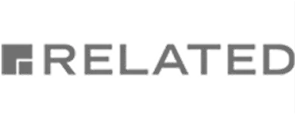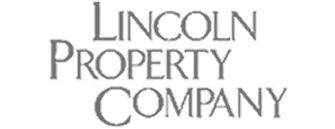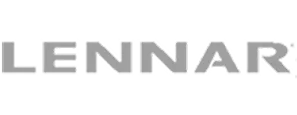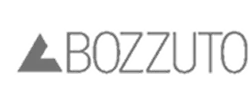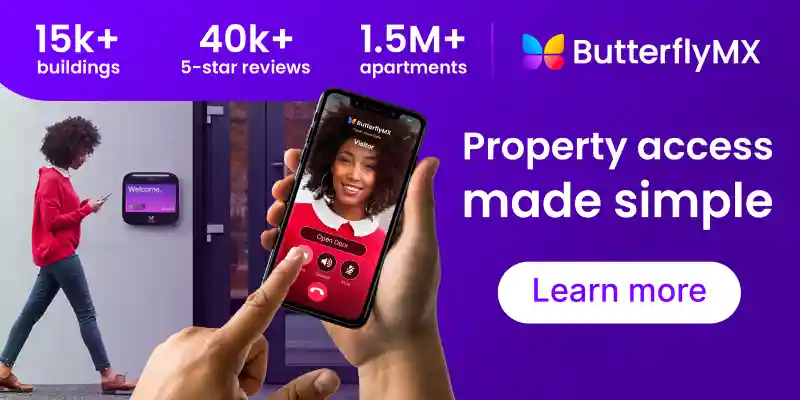Key takeaways
- Technology is becoming essential in senior living communities to improve safety, care, and efficiency.
- Smart access control replaces traditional keys and helps manage building access while reducing manual work.
- Staff can work more efficiently with technology that simplifies scheduling, communication, and documentation.
- Investing in senior living technology in 2025 helps communities stay competitive and future-ready.

The senior living industry is undergoing a major transformation, with technology at the heart. As communities face growing demands for personalized care, operational efficiency, and modern amenities, innovative tech solutions are stepping in to bridge the gap. From smart access control systems to AI-powered health tools, the latest advancements are helping providers deliver safer, more connected, and more engaging experiences for residents and staff alike.
In this guide, we explore the top senior living technology trends in 2025, highlight the benefits of adoption, and offer guidance on how to choose the right solutions and amenities for your senior housing community.
Whether you manage an independent living facility, assisted living property, or continuing care retirement community (CCRC), understanding these trends will help you stay competitive and better serve the next generation of residents.
Navigate this post:
- What are senior living technology trends?
- Top 7 senior living technology trends in 2025
- Key benefits of adopting technology in senior living
- How to evaluate which senior living tech trends are right for your property
- Why 2025 is the year to invest in senior living technology
- Senior living technology trends 2025 FAQs
What are senior living technology trends?
Senior living technology trends refer to the emerging tools and innovations designed to enhance the quality of life for older adults while improving operational efficiency for senior living communities. In 2025, these trends reflect a growing demand for smarter, safer, and more connected living environments, driven by advances in digital health, building automation, and resident engagement tools.
At their core, these trends address the unique needs of aging populations. From AI-powered health monitoring to mobile-based access control systems, today’s technology empowers residents to live more independently while giving staff the tools to deliver proactive, personalized care.
Operators are increasingly adopting platforms that centralize everything from security to communication, streamlining workflows and supporting better outcomes.
As senior housing evolves to serve tech-savvy baby boomers and prepare for the next generation, staying ahead of these trends is essential for long-term success. Whether you’re managing an assisted living facility or an independent senior community, the right technology can reduce risk, improve satisfaction, and elevate your standard of care.
Top 7 senior living technology trends in 2025
In 2025, the senior living industry is embracing a wave of digital innovation that’s transforming both resident care and operational workflows. With shifting expectations from residents, ongoing staffing challenges, and increasing pressure to deliver personalized services, technology has become a strategic necessity.
Operators are investing in solutions that promote independence, enhance safety, and optimize the resident experience, all while making day-to-day operations more efficient.
Top seven senior living technology trends shaping the future of aging services:
- Smart access control and building automation
- Artificial intelligence and predictive analytics
- Telehealth and remote monitoring
- Wearables and health tracking devices
- Resident engagement platforms
- Data security and compliance tech
- Workforce empowerment through technology
1. Smart access control and building automation
As safety and independence become top priorities in senior housing, smart access control is emerging as a must-have. Traditional keys and paper sign-in sheets are giving way to mobile credentials, video intercoms, and cloud-based management systems that allow staff to manage access remotely and in real time.
Residents can unlock doors with their smartphones, family members can be granted visitor passes, and staff can streamline deliveries and service provider access from one platform.
These tools also integrate with broader building automation systems to support everything from lighting to HVAC control, improving energy efficiency and creating more responsive living environments. For operators, this translates to fewer manual processes, better oversight, and a safer, more modern experience for everyone on the property.
Discover the top apartment automation systems:
2. Artificial intelligence and predictive analytics
AI is quickly becoming one of the most powerful tools in senior living, not just for automation, but for anticipating resident needs before they become urgent. In 2025, many communities are deploying AI-powered predictive analytics to identify health risks, streamline staffing, and personalize care.
For example, behavior tracking systems can detect changes in sleep patterns or mobility that may indicate a fall risk or health concern, prompting timely intervention.
Predictive analytics also helps operators make data-informed decisions about staffing, maintenance, and programming. By analyzing usage trends and resident engagement, communities can tailor services more effectively while optimizing their resources. As AI capabilities continue to grow, so does their potential to improve outcomes and extend the length of stay for residents.
3. Telehealth and remote monitoring
Telehealth has moved from a pandemic-era necessity to a long-term pillar of senior care. In 2025, senior living communities are embracing virtual care platforms that connect residents with doctors, nurses, and specialists without leaving their homes. Whether it’s a routine check-in, chronic condition management, or a mental health consultation, telehealth reduces the need for off-site appointments and enhances continuity of care.
Remote monitoring tools, such as connected vital sign trackers or fall detection sensors, allow staff and family members to keep an eye on residents’ well-being in real time. This not only improves clinical outcomes but also gives peace of mind to families and caregivers. As healthcare providers increasingly integrate with these platforms, telehealth becomes a key component of proactive, person-centered senior care.
4. Wearables and health tracking devices
Wearables are no longer just fitness accessories. Now, they’re essential health tools in today’s senior living landscape. Devices like smartwatches, emergency alert pendants, and biometric sensors are helping residents manage their health while allowing staff to monitor vital information without intrusive check-ins. These tools can track everything from heart rate and oxygen levels to sleep patterns and activity levels.
For residents, wearables offer a sense of autonomy and support aging in place. For caregivers and clinicians, they provide valuable data that informs care plans and flags potential issues before they escalate. Many of these devices now integrate with electronic health record (EHR) systems, ensuring seamless communication between residents, care teams, and healthcare providers. As wearables become more user-friendly and accurate, they’re playing a growing role in delivering high-quality, individualized care.
5. Resident engagement platforms
In 2025, technology is transforming how residents stay connected to staff, family, friends, and community life. Resident engagement platforms offer features like digital calendars, activity sign-ups, video calls, and even meal ordering, all accessible from a tablet or in-room device. These tools foster independence, reduce social isolation, and make it easier for residents to navigate daily life.
For staff, engagement platforms simplify communication and reduce repetitive administrative tasks. They also provide valuable insights into resident satisfaction and participation. Some communities are even leveraging voice-activated assistants to help residents with reminders or to request help hands-free. The result: a more empowered resident population and a more responsive care environment.
6. Data security and compliance tech
As senior living communities adopt more connected devices and cloud-based systems, data security has become a top priority. In 2025, operators are investing in technology that safeguards resident information and ensures compliance with privacy regulations, such as HIPAA. From encrypted communications to biometric authentication, security tools are evolving to protect sensitive health and personal data.
Cybersecurity threats can have serious legal and reputational consequences, particularly in environments that handle medical records and financial data. That’s why forward-thinking operators are working with vendors who offer end-to-end data protection, regular updates, and built-in compliance features. Prioritizing security not only builds trust with residents and families but also protects the long-term integrity of the community.
7. Workforce empowerment through technology
Staffing challenges continue to impact the senior living industry, but in 2025, technology is helping communities do more with less. Tools like staff scheduling platforms, mobile communication apps, and workflow automation systems empower teams to collaborate more efficiently and spend less time on administrative work.
For example, caregivers can receive real-time task notifications, log shift notes from their phones, and coordinate resident care seamlessly with colleagues. Some platforms even use AI to recommend optimal staff-to-resident ratios based on acuity levels and activity trends. By eliminating manual bottlenecks and streamlining daily operations, these technologies reduce burnout, enhance job satisfaction, and help communities retain their top talent, all while improving the quality of care residents receive.
Key benefits of adopting technology in senior living
Embracing technology in senior living isn’t just about modernization; it’s about creating safer, more connected, and more efficient communities for both residents and staff. As the industry evolves, the right tools can solve pressing challenges while setting your property apart.
Here are some of the top benefits of adopting technology in today’s senior living environments:
- Enhanced resident safety and independence. Smart access control systems, wearables, and remote monitoring tools reduce risks while allowing residents to maintain autonomy. With features like mobile entry, fall detection, and telehealth, seniors can live more freely without compromising on care or security.
- Streamlined operations and cost savings. Digital platforms automate routine tasks, centralize building management, and eliminate manual inefficiencies. From staff scheduling to visitor management, operators save time and resources, freeing up staff to focus on what matters most: resident care.
- Improved staff communication and retention. When caregivers have access to mobile tools and real-time insights, collaboration improves and stress levels drop. Empowering staff with the right technology leads to better outcomes, reduced burnout, and increased employee satisfaction.
- Better resident engagement and satisfaction. Resident-facing technologies, such as engagement platforms and voice assistants, enhance day-to-day experiences. They keep residents connected, informed, and active, all of which contribute to stronger community bonds and higher satisfaction scores.
- Future-ready infrastructure. Investing in scalable, integrated technology helps properties adapt to changing expectations and demographic shifts. Operators who future-proof their communities today will be better positioned to meet the needs of tomorrow’s more tech-savvy residents.
How to evaluate which senior living tech trends are right for your property
With so many emerging technologies available, it can be overwhelming to decide which ones are the best fit for your community. The key is to start with a clear understanding of your property’s unique needs, goals, and challenges. Begin by identifying your top operational pain points, whether that’s staff shortages, inefficient access control, or limited resident engagement. Then, consider which technologies could directly address those issues in a scalable and cost-effective way.
Next, assess your current infrastructure. Some tech solutions, like cloud-based access control or telehealth platforms, require a strong internet connection or modern hardware to function properly. If your community isn’t equipped for that yet, you may need to prioritize foundational upgrades before implementing more advanced tools. It’s also important to consider the adoption curve: Will residents and staff find the technology intuitive? Choosing user-friendly, purpose-built solutions can make a big difference in successful implementation.
Finally, think long-term. The best technologies are those that can grow with your community and integrate with other platforms. Look for solutions that offer open APIs, ongoing support, and a clear roadmap for innovation. By focusing on tools that solve immediate problems while supporting future growth, you can confidently invest in the technology trends that will deliver lasting value for your residents, staff, and bottom line.
Why 2025 is the year to invest in senior living technology
The senior living industry is at a turning point, and 2025 presents a unique opportunity to lead with innovation. Demographic shifts, staffing pressures, and rising expectations from residents and families are driving a need for smarter, more efficient communities. At the same time, technology has matured. Solutions that once felt out of reach are now affordable, scalable, and purpose-built for senior care environments.
Whether you’re managing an independent living facility or a full-service assisted living community, the tools available today can help you address key challenges while preparing for the future. From AI-powered analytics to mobile-first access control, the right tech solves problems and transforms how your community operates.
Investing in technology now positions your property as a forward-thinking, resident-centered community. It empowers staff, enhances care delivery, and supports long-term success in a competitive and evolving market. Simply put, 2025 is the year to modernize, differentiate, and lead.
Senior living technology trends 2025 FAQs
- What are the top senior living technology trends in 2025?
- Why is technology important in senior care?
- How is AI used in senior living?
- What does access control mean in a senior living facility?
- Are residents comfortable using technology?
- What should I consider before investing in new technology?
What are the top senior living technology trends in 2025?
The top trends include smart access control systems, artificial intelligence, telehealth, wearable health devices, resident engagement platforms, cybersecurity solutions, and workforce management tools. These technologies are transforming how communities operate and how care is delivered.
Why is technology important in senior care?
Technology enhances safety, improves communication, and increases efficiency in senior living communities. It allows residents to maintain independence, helps staff provide better care, and streamlines daily operations for property managers.
How is AI used in senior living?
AI is used to predict health risks, optimize staffing, and personalize care. It can analyze behavior patterns, flag potential medical issues early, and support decision-making for both caregivers and administrators.
What does access control mean in a senior living facility?
Access control refers to managing who can enter or move through a property. In senior living, smart access control systems use tools like video intercoms and mobile credentials to enhance security, simplify visitor management, and reduce reliance on physical keys.
Are residents comfortable using technology?
Yes and no. Today’s senior living residents are increasingly tech-savvy, but many communities find it beneficial to offer training or support to ensure residents can use tools like tablets, voice assistants, and wearables comfortably. User-friendly interfaces and thoughtful design make adoption easier.
What should I consider before investing in new technology?
Start by identifying your property’s needs, evaluating your existing infrastructure, and ensuring the solution is scalable and easy to use. Look for platforms that integrate well with your current systems and offer reliable support and training.

Get your free quote!
Fill in the form below, and we'll email you right back.
Want a free quote?
Fill in the form below, and we'll email you right back.
You’ll be redirected shortly...

